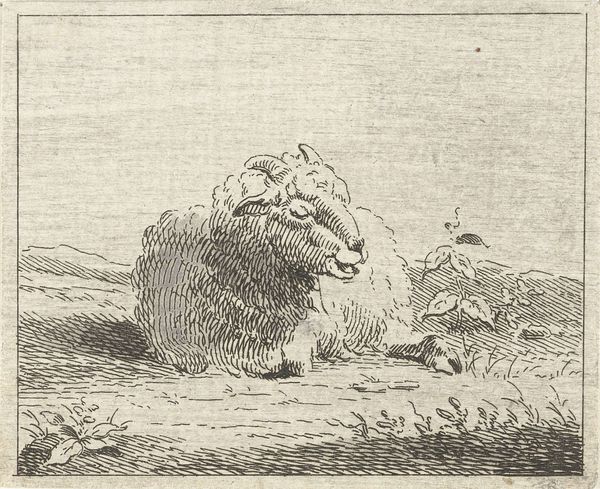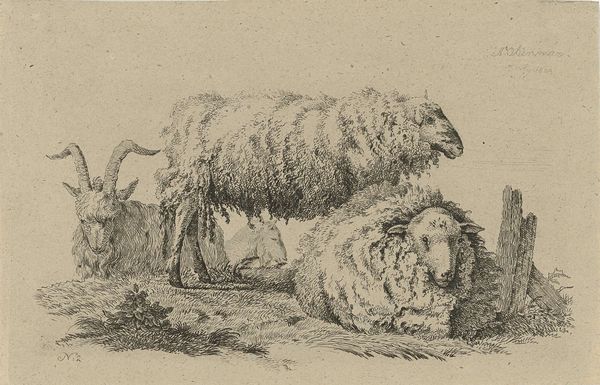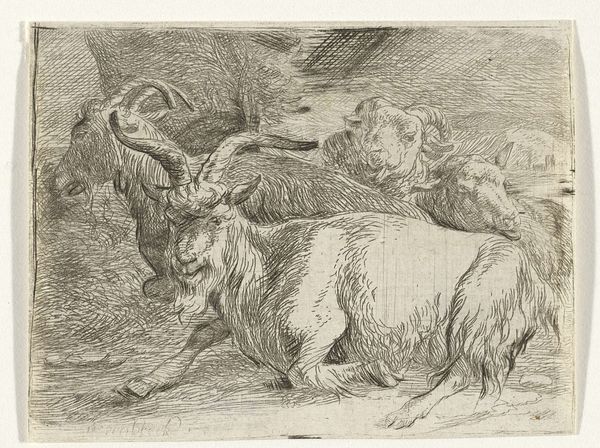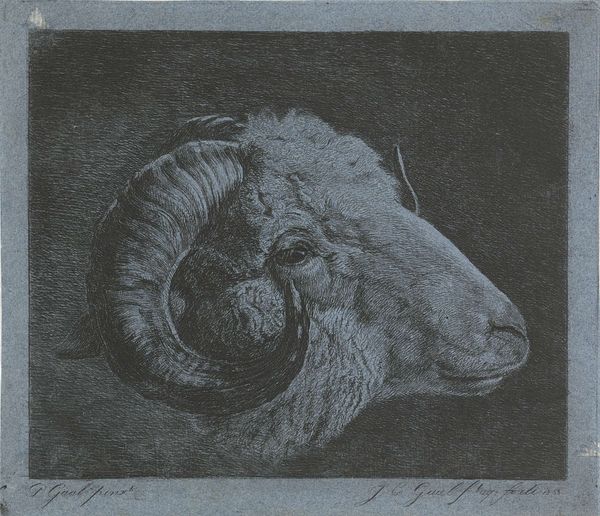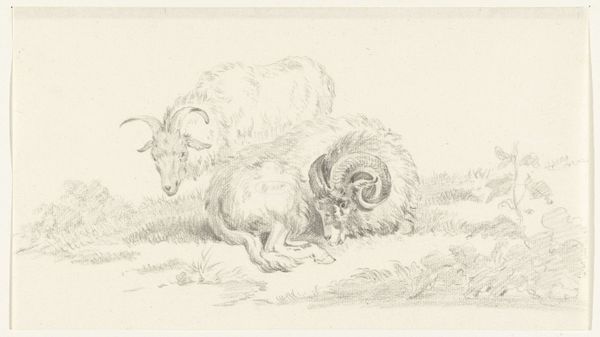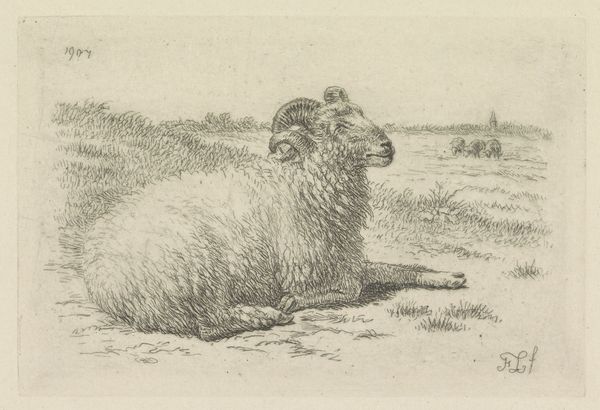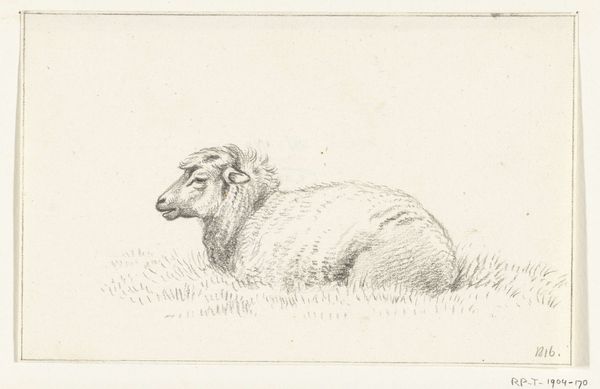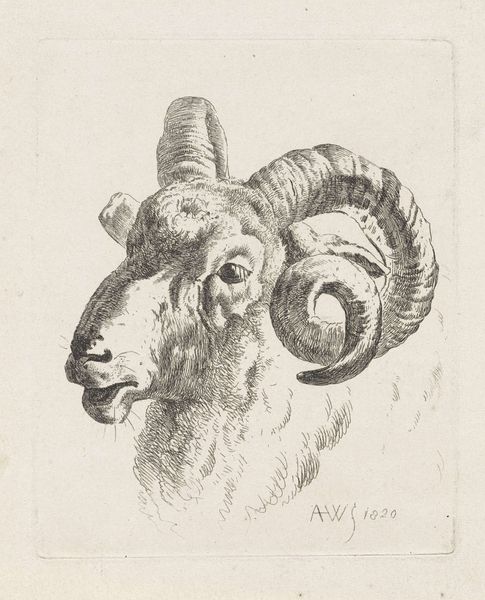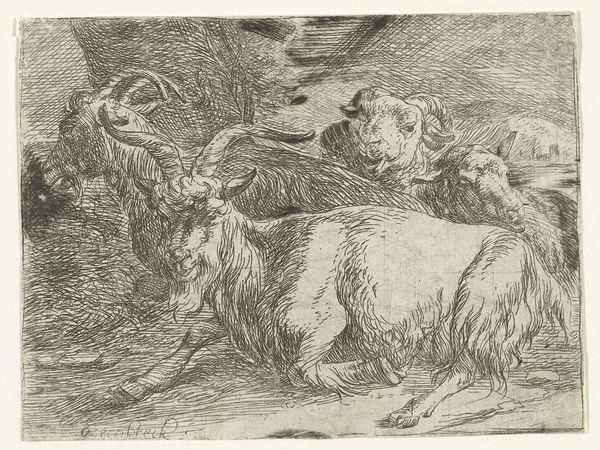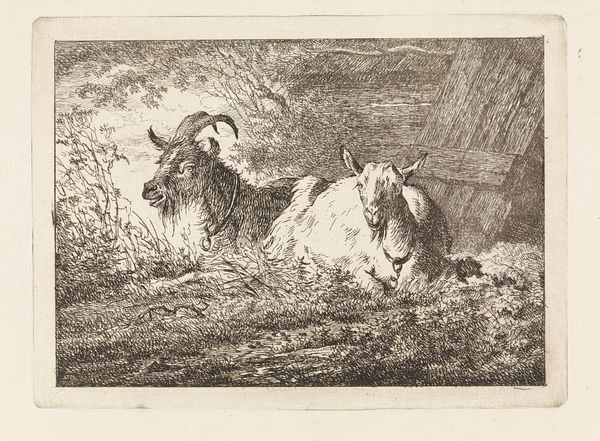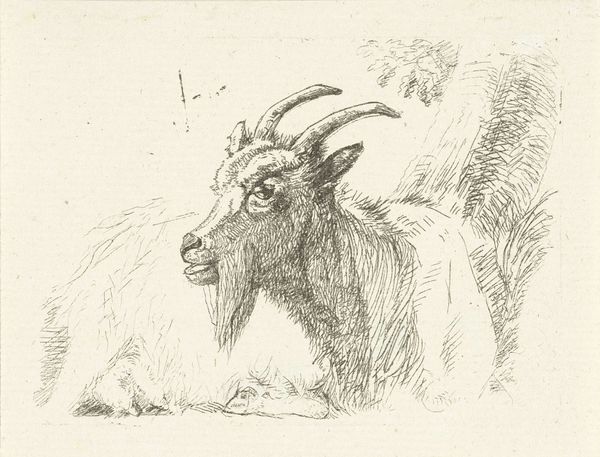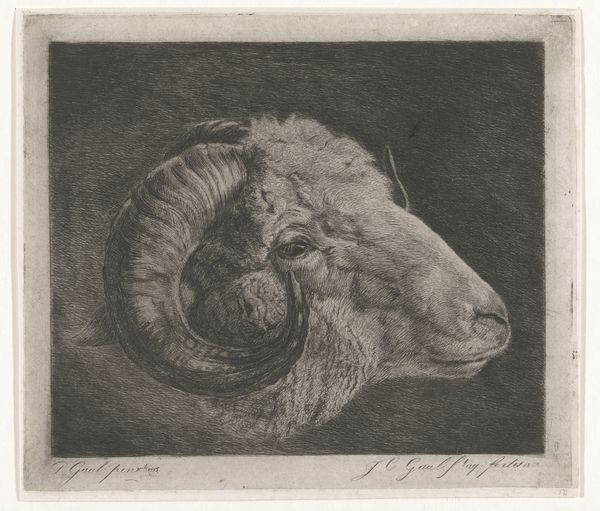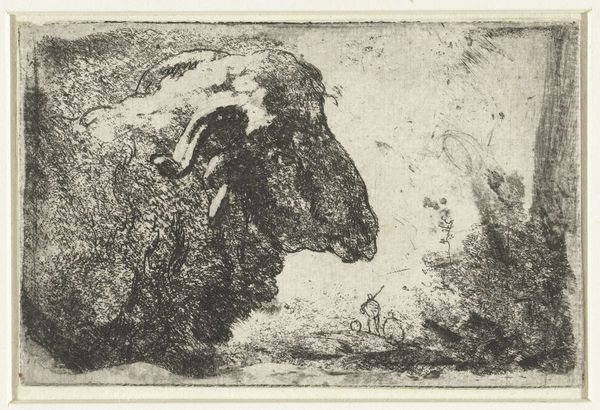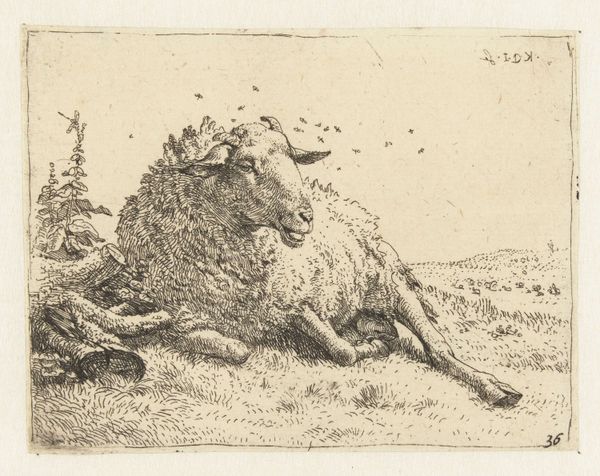
drawing, pencil
#
drawing
#
landscape
#
pencil drawing
#
pencil
#
realism
Dimensions: height 258 mm, width 391 mm
Copyright: Rijks Museum: Open Domain
Editor: This is "Ramskop en tak" by Joannes Bemme, a pencil drawing made sometime between 1809 and 1841. The ram's head looks so dignified and imposing against the muted background. How do you interpret this work? Curator: This piece offers a compelling lens through which to examine 19th-century Dutch identity and its evolving relationship with the natural world. Consider the ram itself: What does this animal symbolize within the context of Dutch art and society at that time? Is it merely a study of animal anatomy, or does it reflect broader themes of power, virility, or even sacrifice that are often associated with such imagery? Editor: Sacrifice, interesting. I hadn’t thought about that. Curator: Furthermore, the inclusion of the branch introduces an element of narrative. Is it simply a compositional device, or could it represent something more symbolic? Think about the ways in which landscapes during this period were often used to convey political or social messages. Could this seemingly straightforward depiction of nature be subtly alluding to contemporary debates about land use, agricultural practices, or the relationship between humans and the environment? Editor: So you're saying this simple ram could be speaking to larger ideas? Curator: Precisely. It invites us to question what might seem at first glance to be a rather conventional representation of an animal. By considering the social and historical context in which Bemme was working, we can begin to uncover deeper meanings embedded within the work. What’s your sense of the historical importance of studies such as this one? Editor: It sounds like there's more to this ram than meets the eye, connecting the piece to discourses on environment, society, and even power dynamics in the 19th century! Curator: Absolutely. Exploring the interplay between the aesthetic and the socio-political offers richer insights into works that may at first appear conventional.
Comments
No comments
Be the first to comment and join the conversation on the ultimate creative platform.
